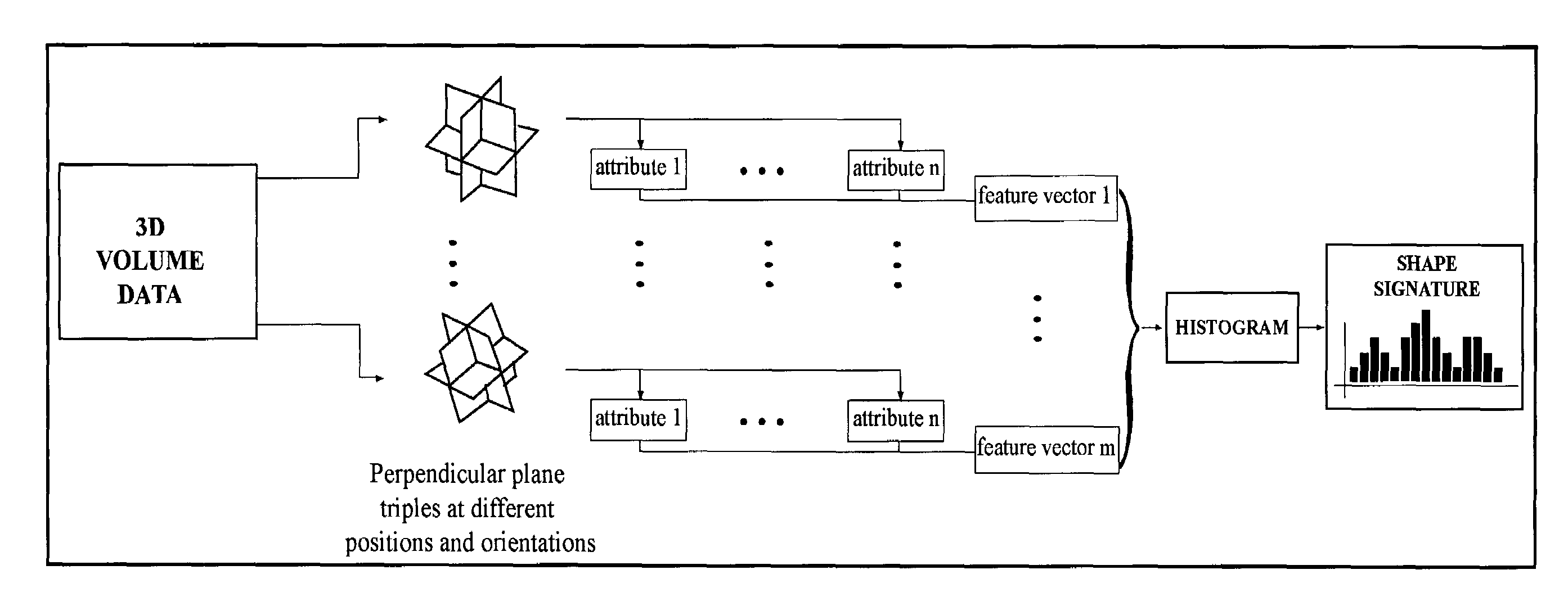Three-dimensional pattern recognition method to detect shapes in medical images
a three-dimensional pattern recognition and shape technology, applied in the field of medical imaging, can solve the problems of inability to use foc as a population screening test, and inability to achieve the effect of eliminating guesswork
- Summary
- Abstract
- Description
- Claims
- Application Information
AI Technical Summary
Benefits of technology
Problems solved by technology
Method used
Image
Examples
Embodiment Construction
[0026]Although the following detailed description contains many specifics for the purposes of illustration, anyone of ordinary skill in the art will readily appreciate that many variations and alterations to the following exemplary details are within the scope of the invention. Accordingly, the following preferred embodiment of the invention is set forth without any loss of generality to, and without imposing limitations upon, the claimed invention.
[0027]In general, the present invention is a combination of two method steps as shown in FIGS. 2-3. The first step is feature estimation 210 to generate shape signatures for candidate volumes containing candidate shapes. The feature estimation method computes descriptors of objects or of their images. In one example, the feature estimation is based on a Random Orthogonal Shape Sections method (ROSS) 310. The second general step involves classification 220, 320 of these shape signatures for diagnosis. A classifier contains, builds and / or t...
PUM
 Login to View More
Login to View More Abstract
Description
Claims
Application Information
 Login to View More
Login to View More - R&D
- Intellectual Property
- Life Sciences
- Materials
- Tech Scout
- Unparalleled Data Quality
- Higher Quality Content
- 60% Fewer Hallucinations
Browse by: Latest US Patents, China's latest patents, Technical Efficacy Thesaurus, Application Domain, Technology Topic, Popular Technical Reports.
© 2025 PatSnap. All rights reserved.Legal|Privacy policy|Modern Slavery Act Transparency Statement|Sitemap|About US| Contact US: help@patsnap.com



